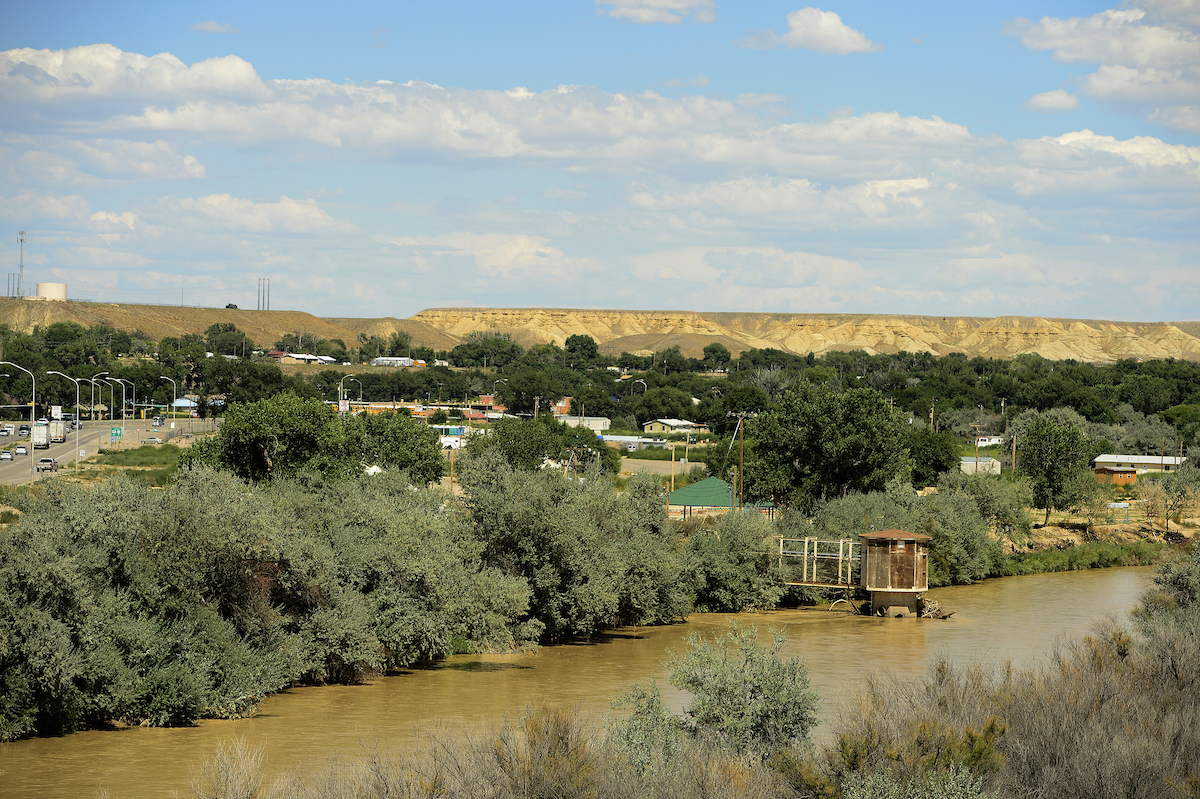
Since Labor Day weekend, Native Americans representing at least 100 tribes from the U.S. and Canada have descended on the Sacred Stone Camp in North Dakota to protest pipeline construction, which they fear will contaminate the sole water supply of the Standing Rock Sioux Tribe.
Even beyond the specific question of water, the overarching concern for Indians has been what many view as an infringement on tribal sovereignty. Federally recognized tribes are sovereign nations with a government-to-government relationship with the U.S., which via treaty rights and trust responsibility acts as a guarantor against the destruction of Indian sacred sites. But the history of the federal government failing to make good on that agreement is a long one.
The Dakota Access Pipeline Project has promised to make the protection “of landowner interest and the local environment” a “top priority,” but Indian tribes have heard similar promises in the past. One prime example of the exploitation and environmental destruction on reservations began during World War II, and serves as a cautionary tale for current corporate interest in Indian Country.
The writer Judy Pasternak, in her book Yellow Dirt: An American Story of a Poisoned Land and a People Betrayed, recounts the tragic consequences of uranium excavation on the Navajo (Dine) Reservation in Shiprock, N.M. Prior to WWII, reservation mining was restricted. With the rise of Nazi Germany and the attack on Pearl Harbor, the Navajos lent their bodies, their language and their land to the war effort. The tribe agreed to allow Vanadium Corporation of America to mine the vanadium ore used to make weapons with a contractual promise “to take appropriate steps for the preservation of property and the health and safety of workmen.” The company was bound to “return the property in as good condition as received.”
Get your history fix in one place: sign up for the weekly TIME History newsletter
But as Pasternak writes, there were some landowners who objected to mining “what the Navajos called łeetso—yellow dirt;” others believed cooperating with the federal government was both politically and economically expedient. As one man put it: “If łeetso can fight the enemy people and we say no, it will backfire on us.” The promise of jobs and economic security took young Navajos deep into the mines of the Shiprock reservation.
The Navajos were not aware of the true goal of the mining, which was to supply uranium for the government’s secret Manhattan Project and usher in the atomic age, nor were they warned by the Bureau of Indian Affairs that the drilling, hammering and blasting would loosen radioactive materials. By the time the Navajos (and subsequently the Laguna Pueblo, where uranium mining began in 1951) realized the environmental and health cost, it was too late. As Pasternak laments, “‘yellow dirt’ had crept into every aspect of their daily lives: their homes, their drinking water, their playgrounds, even their garbage dumps.”
By the 1970s, consequences of decades of uranium exposure began to appear in the form of cancer, which ballooned among the tribal citizens on mining reservations.
On May 2, 1979, the Harvard Crimson reported on a large gathering of Navajos, Pueblos and their allies who protested against the continued mining on Indian reservations. Beginning in 1970, Gulf Oil had operated a uranium mine, which brought to the surface 100 million pounds of ore at Mt. Taylor, N.M., the demonstration site considered by the tribes as sacred. According to the Crimson, mining was denounced “as an act of sacrilege and desecration”; a tribal lawsuit against six federal agencies pending in Washington, D. C. to halt uranium and coal mining scheduled for additional reservations marked “a growing Indian resistance to government and corporate exploitation of Indian land, resources and people.”
During the 1980s the Indian mining sites were closed down and abandoned, but the environmental health crisis on Indian reservations continued. As TIME reported in 2001, “Although the Atomic Energy Commission knew by 1951 that venting radon gas from uranium mines could greatly reduce workers’ exposure to radiation, it waited 20 years to require the practice at mines in Southwestern states.”
Obstacles to compensation have been many. In 1979, an attempt by 200 Indians with cancer to sue the federal government was dismissed “on the ground of sovereign immunity, which exempts the Government from legal liability unless it gives its consent.” A 2001 Senate bill that would have compensated miners and their families faced opposition from the DOJ, which equated the money to an “entitlement program.”
But past is indeed prologue. Indian nations will continue to fight for their own interest and demand the federal government honor its treaty obligation. And, given the history they’ve seen, that fight is surely not surprising.

Historians explain how the past informs the present
Arica L. Coleman is the author of That the Blood Stay Pure: African Americans, Native Americans and the Predicament of Race and Identity in Virginia and chair of the Committee on the Status of African American, Latino/a, Asian American, and Native American (ALANA) Historians and ALANA Histories at the Organization of American Historians.
More Must-Reads from TIME
- Donald Trump Is TIME's 2024 Person of the Year
- Why We Chose Trump as Person of the Year
- Is Intermittent Fasting Good or Bad for You?
- The 100 Must-Read Books of 2024
- The 20 Best Christmas TV Episodes
- Column: If Optimism Feels Ridiculous Now, Try Hope
- The Future of Climate Action Is Trade Policy
- Merle Bombardieri Is Helping People Make the Baby Decision
Contact us at letters@time.com